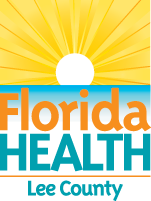It's a New Day in Public Health.
The Florida Department of Health works to protect, promote, and improve the health of all people in Florida through integrated state, county, and community efforts.
Microbiology Water Lab
Environmental Engineering
- 239-274-2200
- LeeCHDEEFeedback@flhealth.gov
-
Fax
239-274-2201 -
Mailing Address
60 Danley Dr. S Unit #1
Fort Myers, FL 33907
_____________________
TTY users can contact us through Florida Relay by dialing 7-1-1 or one of the other Relay Toll Free Numbers.
Effective January 1, 2018 the laboratory will no longer accept water samples on Fridays. Please deliver water samples to the lab Monday through Thursday before 2:30pm.
All samples must be collected using the approved sample containers which can be obtained from the department. Different types of sample bottles are used for different analyses, and they are not interchangeable. Samples must be placed into wet ice immediately after collection and must be received by the laboratory within 24 hours of being collected.
Instructions for Collections of Water Samples
Bacteria (MUG test)-
- If there is a disinfection system, such as a chlorination system or a UV light, you should collect two water samples. One water sample should be taken from immediately after the well (raw water) and the other sample should be taken from anywhere after the disinfection system such as a kitchen faucet or outside hose bib after treatment (treated water). If you do not have a disinfection system you only need to take one sample after any treatment equipment such as a water softener or aerator, this can be taken outside after the equipment or from an indoor faucet (cold water only).
- Remove the faucet’s aerator or strainer if one is present. If collecting from a hose bib, remove the hose or any other attachments that may be present.
- Allow the water from the faucet or well to run at full flow for a few minutes, then turn off.
- Disinfect the faucet or hose bib with a 10% solution of unscented household bleach, ensuring to disinfect the edges and inside of the faucet head. Let the bleach sit for at least 1 minute, then turn on the water.
- Allow the water to flow for 5 minutes, then slow the water flow to approximately the width of a #2 pencil but keep it running. Be sure to only use cold water.
- Remove plastic seal from the collection container and dispose. Remove lid from the sample container. Do not allow the chlorine neutralizer (white dust) to fall out of the container or be rinsed out. Ensure that the inside of the lid does not touch anything.
- Carefully fill sample container with water to the 100ml mark located on the side of the sample container. Do not touch the lip or inside of the sterile container with anything but the water sample.
- After sampling, place lid on the sample container carefully and tighten.
- Mark sample container as to where the sample was taken, e.g. well, bathroom, kitchen.
- You must preserve the sample on wet ice or your sample WILL NOT be accepted.
Do not rinse out the container, overflow the container or dip the container into water when sampling, or the test will be invalid. Overly full or underfilled bottles will not be accepted.
Lead (Pb)-
The lead sample must be collected from INSIDE the house, the first draw of the day. Before anyone runs any water, fill the lead bottle from the faucet and fill it up to the top.
Do not put bleach in the sample. Place the sample in wet ice. If the house has been empty, flush the lines prior to taking the sample, let the water sit overnight and then take the sample first thing the next morning.
Nitrite/Nitrate/Nitrite + Nitrate (NO2/NO3/NOX)-
This should be taken from the spigot at the well, OUTSIDE. Fill both bottles at the same time and fill to the top. Place in wet ice.
Water Acceptance Policy
- Samples must be submitted with the proper labeling that allows for traceability to the sample record. Improperly labeled samples will be rejected.
- Samples must be in the container provided by the department, free of leaks. Containers that are broken or cracked will be rejected.
- All samples received are checked for temperature and method of delivery at the time of drop off. Temperature measurements are completed by an electronic recording device. Samples exceeding 10 degrees C will be rejected and/or a sample exception record will be generated.
- Chlorinated samples lacking chlorine concentration documentation will be rejected.
- Samples received in excess of 100 ml. will be accepted if adequate air space exists to ensure proper mixing of the solution. If inadequate air space exists to complete mixing, the sample will be rejected and/or a sample exception record will be generated.
- All samples with less than 100 ml. volume will be rejected.
- Samples may be received with interferences (high turbidity, discoloration, and smell) due to high iron compounds, organic material and calcium carbonate precipitants. In such cases where analysis may be affected, a sample exception record will be generated. A sample resubmission may be requested.
- Samples must be received within 24 hours of being drawn. A sample submitted after this deadline will be rejected.
.- Samples must be received within 24 hours of being drawn. A sample submitted after this deadline will be rejected.
Department of Laboratories, DEP, State Certified Drinking Water Laboratories
2023 Environmental Lab Holiday Calendar
2024 Environmental Lab Holiday Calendar




Connect with DOH